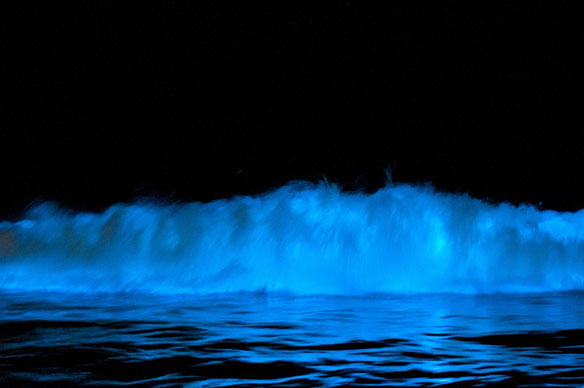
Red tide bioluminescence. Distinctive blue flashes, a type of bioluminescence, that are visible at night in some marine environments are caused by tiny, unicellular plankton known as dinoflagellates, some of which can produce toxins that are harmful to the environment. Captions: Science Daily. Photo source: ©© Phil Gibbs
Excerpts;
Slow moving glops of toxic algae in the northeast Gulf of Mexico are killing sea turtles, sharks and fish, and threatening the waters and beaches that fuel the region’s economy.
Known as “red tide,” this particular strain called Karenia brevis is present nearly every year off Florida, but large blooms can be particularly devastating. Right now, the algae is collecting in an area about 60 miles wide and 100 miles long…
Read Full Article, Huffington Green
Red Tide Species Is Deadlier Than First Thought, Science Daily (07-27-2012)
Scientists have discovered that a species of tiny aquatic organism prominent in harmful algal blooms sometimes called “red tide” is even deadlier than first thought, with potential consequences for entire marine food chains…
Bioluminescence: Explanation for Glowing Waves Suggested, Science Daily (10-22-2011)
It has long been known that distinctive blue flashes, a type of bioluminescence, that are visible at night in some marine environments are caused by tiny, unicellular plankton known as dinoflagellates, some of which can produce toxins that are harmful to the environment…








